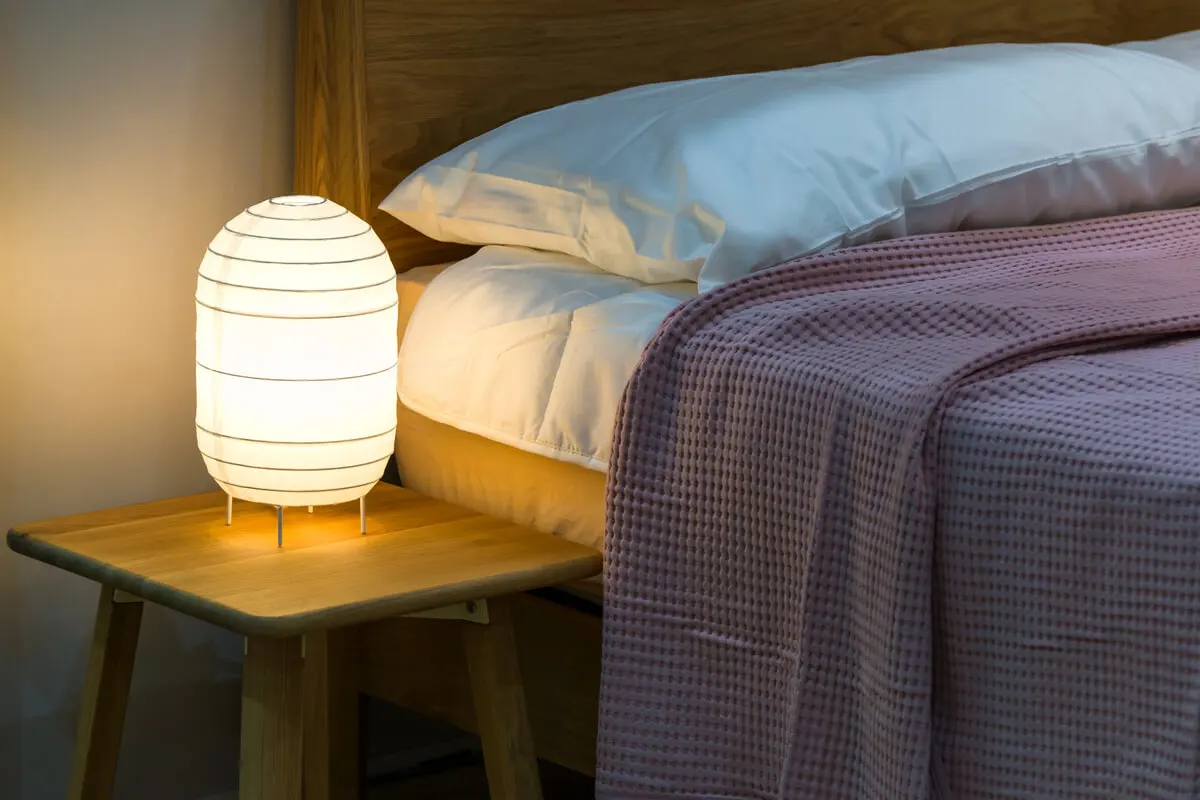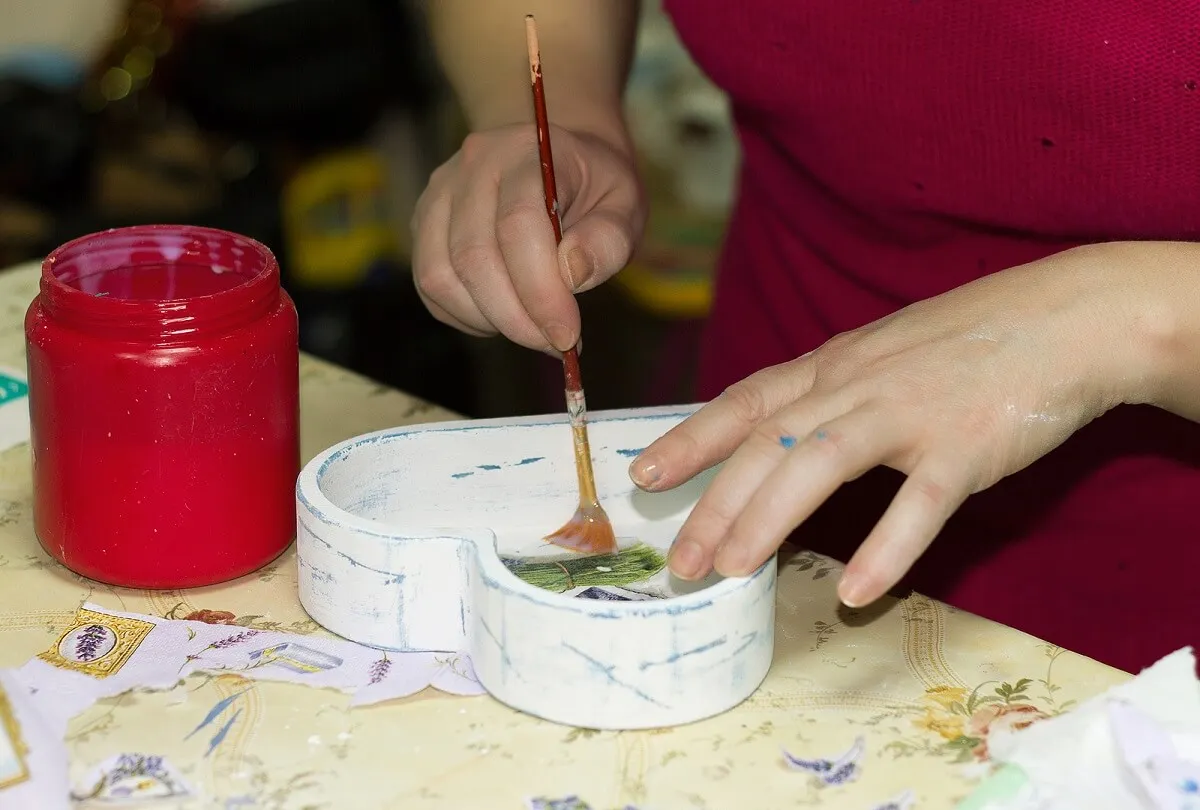How to Use Rice Paper for Decoration

Rice paper is a very versatile material that’s often used for certain gastronomic recipes, for drawing, and even for typical Japanese panels. However, it’s increasingly used in the decorative field. Its ease of handling, low cost, and the variety of designs that can be combined make it ideal for embellishing objects.
Some of these elements can be storage boxes, Chinese lamps, and various kitchen utensils. Rice paper can be applied in its original color (white) or in other versions. Since it’s of natural origin, it’s a simple object to use with different techniques and is very effective for updating your decor.
What is rice paper?
Rice paper is an element made from the fibers of the rice plant. However, it also incorporates components of bamboo and hemp. It’s a material with a delicate appearance; however, it offers good resistance.
This condition makes it adaptable to different uses, among which are decorative, gastronomic, and even exterior enclosures. In spite of having a fine texture and a weak appearance, it’s an element that withstands the passage of time. On the other hand, it doesn’t stand up well to shocks or pressure.
We think you may be interested in reading this, too: Ethnic Style Decoration: Tips to Implement It at Home
The origin of rice paper
It has its origins in the oriental culture, where the rice plant comes from. There are centuries-old writings on rice paper, although it’s not the ideal material for this purpose. Rice paper is very present in typical Japanese objects, such as shoji panels, which divide the rooms of a home.
Also, rice paper is often used in the creation of origami and other crafts. On the other hand, Chinese lamps, increasingly used around the world, have rice paper as the main protagonist. Its use spread all over the planet, both in the decorative and gastronomic aspects.

The best ideas to use rice paper in decoration
This material has positioned itself as one of the most applied for coating objects and other types of decoration. This is due to its versatility, easy handling, and low cost. In this way, it’s possible to use rice paper to decorate a large number of objects using many different techniques. Let’s take a look at some of them.
Photo frames
One of the greatest advantages of rice paper is that drawings can be added in different ways. While it’s possible to draw on them, the texture of the material isn’t the most suitable. Since this type of paper is so thin, it can also be placed over other designs and traced.
This technique is very useful in the decoration of frames, whether it be for pictures, photos, or even mirrors. It’s recommended that the frames are wide enough to insert rice paper over them and that the designs match the colors of the mirror. Simply paste the paper over the frame and cover it completely.
Plates, bottles, and other kitchen items
Kitchen items such as glasses, trays, and plates can also be decorated with rice paper. In this case, it’s advisable to use the decoupage technique, which consists of adhering cut-outs to the surface until an even coating is achieved.
Although rice paper is often a bit complex to draw on, with a little practice, it’s possible to achieve good designs. It can also be applied to different wooden objects, such as stools, chairs, or tall furniture.
Boxes with rice paper
One of the most suitable objects to decorate with this material is storage boxes. There are many different ways to do this; for example, you can decorate boxes by covering only the lid or the whole box with rice paper, including the base. All cut-outs should be adhered with white glue diluted in water. This is the ideal glue for working with rice paper.
It’s important to pre-coat the surface and then coat again after inserting the paper. Make sure that there are no wrinkles, and then dry the water residue with a cloth. The design also depends on personal taste; it can be a single color or a combination of shades.
On the other hand, it’s possible to include drawings, DIY design, traced motifs, and even the decoupage technique. If you want to protect the design achieved, it’s advisable to apply a layer of varnish on top, which gives it shine and firmness.
Walls and glass
It’s also possible to decorate entire walls with rice paper. To do this, the surface must be as clear and smooth as possible.
The procedure is similar to that of the boxes – that is to say, by placing a layer of the adhesive before and then another one on the paper. It’s important not to leave wrinkles that later ruin the design.
It can even be adhered to glass doors or windows. In this case, the entire surface must be sanitized so that there are no impurities that affect the paper.
Adherence is achieved with the same white glue in water or with latex glue. As always, it’s essential that there are no air pockets.

Chinese lamps
If there’s a reason why many people know rice paper, it’s because of the Chinese lamps. They are those typical lights decorated with a paper ball.
They can be obtained in many stores or also made by hand. This paper has the advantage of being translucent, so it allows the light to pass through while softening it.
Other uses of rice paper
Apart from the decorative use, this element has an increasingly important role in the gastronomic universe. As long as it’s natural rice paper and doesn’t contain any other additives, it can be used for different dishes.
Sometimes this paper is used to add an aesthetic component, and sometimes it’s used to integrate ingredients or improve the presentation of a dish, as in the case of the following examples:
- Tarts: Rice paper is applied to decorate tarts with different designs.
- Cakes: A technique used on cakes is that of drawing with edible inks. In this way, both the rice surface and the design made on top are suitable for consumption.
- Spring rolls: In this case, the rice paper plays a central role in integrating the filling and presenting the dish. It’s also indispensable for Vietnamese rolls.
Like this article? You may also like to read: Coastal Grandma Decoration: What Is This Trend All About?
Designs of all kinds
Depending on one’s skills and willingness to decorate, you can buy rice paper with designs already on it, or you can decorate it yourself. If you want to skip the drawing step, there are ready-made options for sale, some with oriental motifs and others with various patterns.
This material is suitable for gluing on drawings made on other paper. Therefore, the possibilities are endless!
All cited sources were thoroughly reviewed by our team to ensure their quality, reliability, currency, and validity. The bibliography of this article was considered reliable and of academic or scientific accuracy.
- Díaz Navarro, Janet, Inés Baró Valle, and Sofía Flavia Borrego Alonso. “Evaluación de Almidones de Arroz Cubanos Como Adhesivo Para La Restauración de Documentos: Fuerza de Adhesión y Flexibilidad.” Ge-conservacion 20 (2021): 219–227. Disponible en: https://doi.org/10.37558/gec.v20i1.867
- Vázquez Rodríguez, Yunior, Los Espacios interiores de la Vivienda y el diseño de interiores en Hoteles para el turismo.. Revista de Arquitectura e Ingeniería [Internet]. 2011;5(1): Recuperado de: https://www.redalyc.org/articulo.oa?id=193921374005
- Pérez, Noraida , Ruiz, M , Muñoz, Yaumara, Rodríguez, M. E., Díaz, G. S. , Domínguez, D., COMPORTAMIENTO DE LA VARIEDAD DE ARROZ (Oryza sativa L.) INCA LP-4 SEMBRADA EN DIFERENTES ÉPOCAS DEL AÑO. Cultivos Tropicales [Internet]. 2009;30(1):57-60. Recuperado de: https://www.redalyc.org/articulo.oa?id=193217899009
This text is provided for informational purposes only and does not replace consultation with a professional. If in doubt, consult your specialist.








